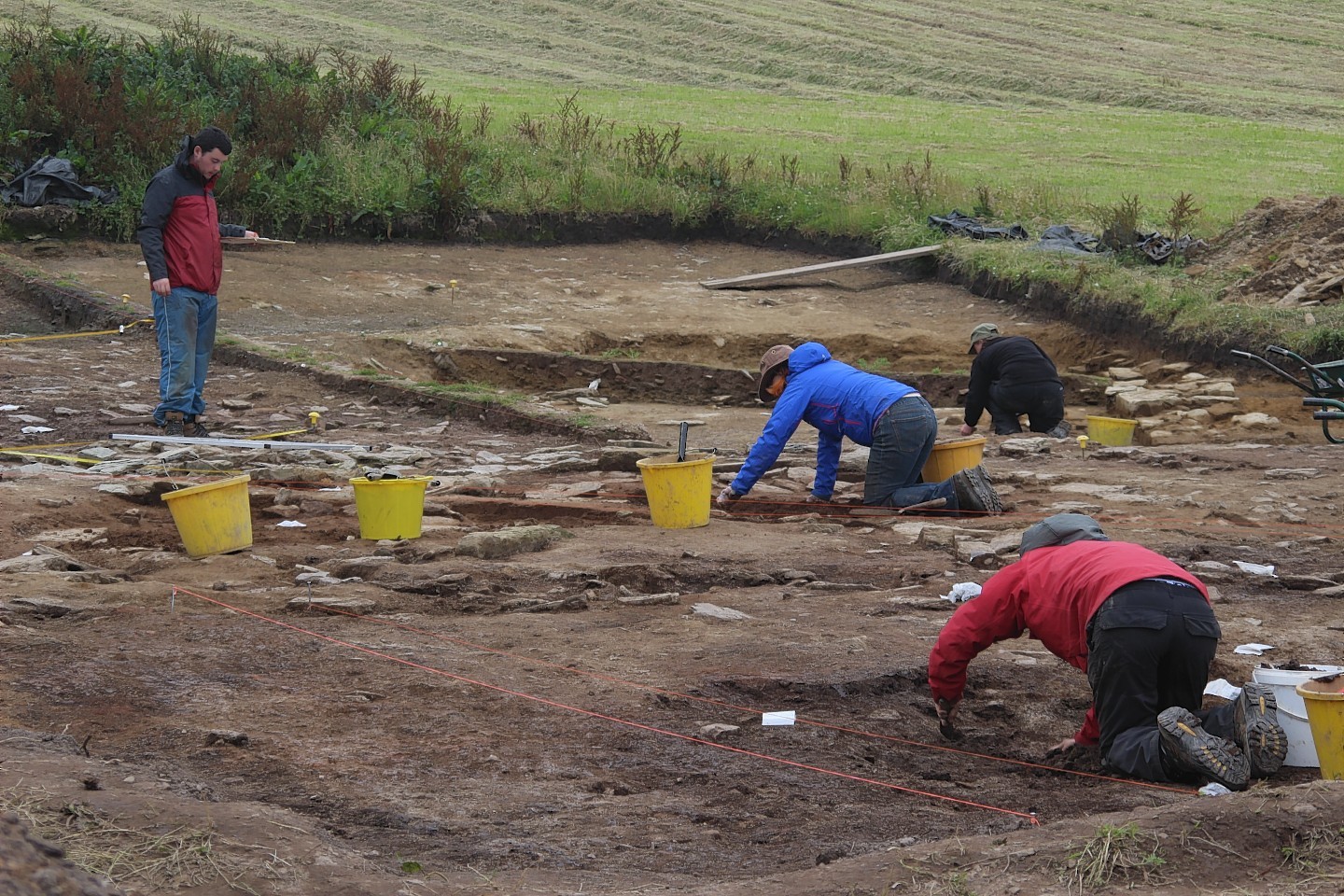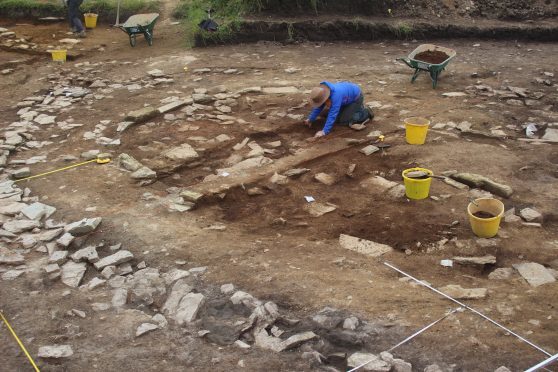A long-hidden Neolithic settlement has been discovered in Orkney.
Archaeologists working on the site at Smerquoy say they have uncovered a “substantial” settlement dating back to the early Neolithic period.
The unexpected find follows three years of careful work by the team at the site on the slopes of Wideford Hill close to the Orkney capital.
Professor Colin Richards, of Manchester University, said: “What makes this an exciting discovery is that we appear to be excavating within a substantial early Neolithic village where houses are situated in a row next to one another along the side of the hill.

“Each house is terraced into the hill slope in order to provide a level internal floor surface.
“These are large houses, with floor areas of around 50 square metres subdivided into inner and outer rooms or compartments.
“The inner room had a large scoop fireplace, and with outer walls some 1.5m thick: these were large comfortable houses.”
The experts working at the scene believe their discovery changes the perceived wisdom of how early farmers in the islands lived.
It was previously believed that the early settlers lived in small isolated farmsteads similar to a another discovery from the same period at Knap of Howar on Papay.
Several other individual houses have also been discovered but Professor Richards said it has been “debatable” whether they formed a village similar to the famous site at Skara Brae.
He added: “Smerquoy alters this picture completely. The imagery of a row of early Neolithic houses spread across the lower slopes of Wideford Hill is extraordinary and requires us to not only rethink the density of settlement at this time, but also enables a degree of understanding as to how the big later Neolithic settlements such as Barnhouse, Links of Noltland and Ness of Brodgar, came into being – they simply continued a pattern that dated back to the beginnings of farming in the northern isles.

“Furthermore, the presence of villages at such an early date makes the question of how Orkney was populated by the earliest farmers far more problematic, as we appear to be dealing with a substantial influx of people.”
The Orkney project is a joint venture between the University of the Highlands and Islands, the University of Manchester and the University of Central Lancashire.
